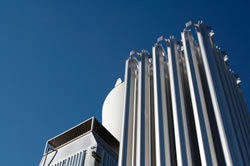Masteel offers a range of carbon steel plates specifically for cryogenic storage.

Applications of Cryogenic Steel ASTM A553 Class 1 and Class 2
Our range of steels are ideal for the containment or transportation of liquefied gases such as oxygen, nitrogen and argon which need to be stored at a temperatures below -196°C. The material is a pressure vessel grade which displays resistance to low temperature brittle fracture.
Many of the pressurised storage tanks designed to hold these gases are double walled with an insulation layer to minimise any generation in heat. Considerations should be made not only to the material used but also the fittings required which will also include piping and valves.
Cryogenic Steel Grades
We offer the following steel grades for cryogenic purposes:

This information has been sourced, reviewed and adapted from materials provided by Masteel UK Ltd.
For more information on this source, please visit Masteel UK Ltd